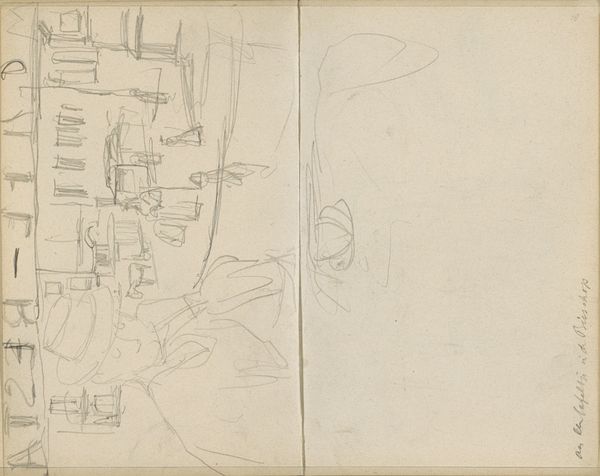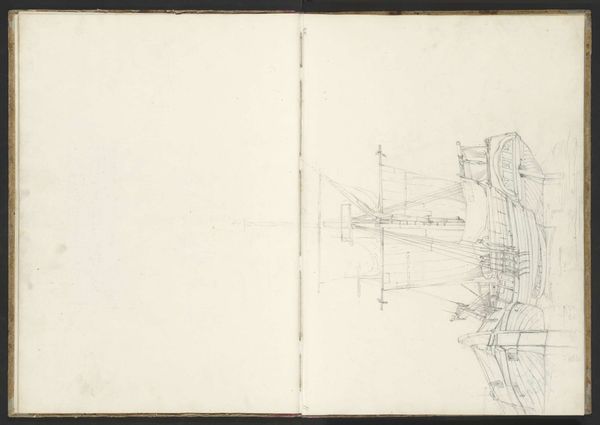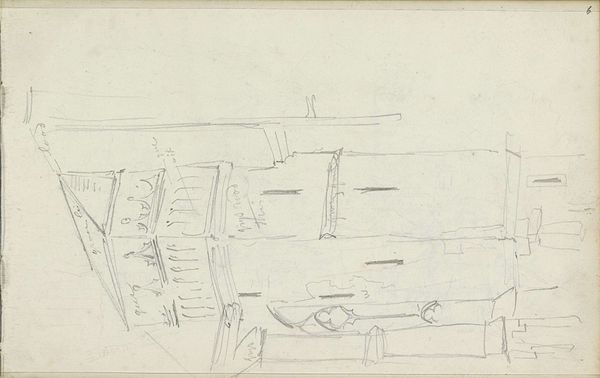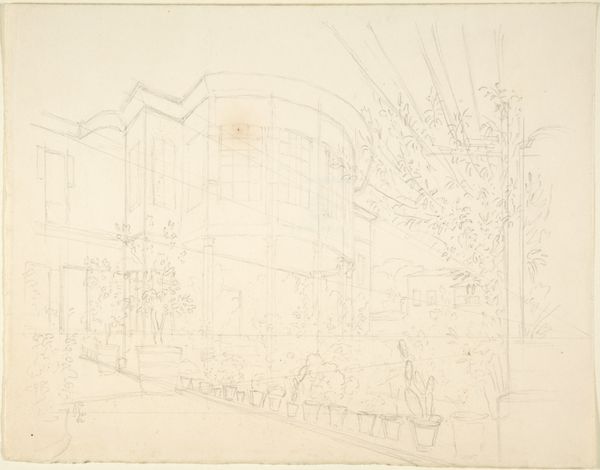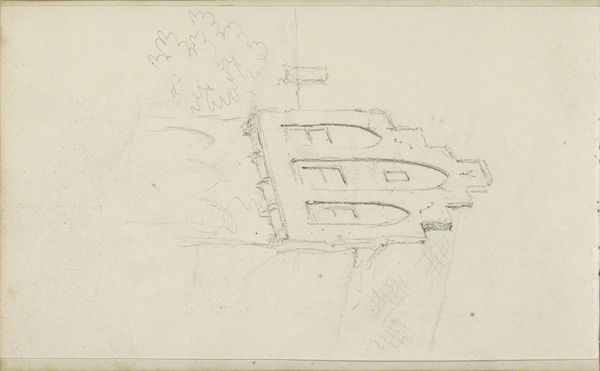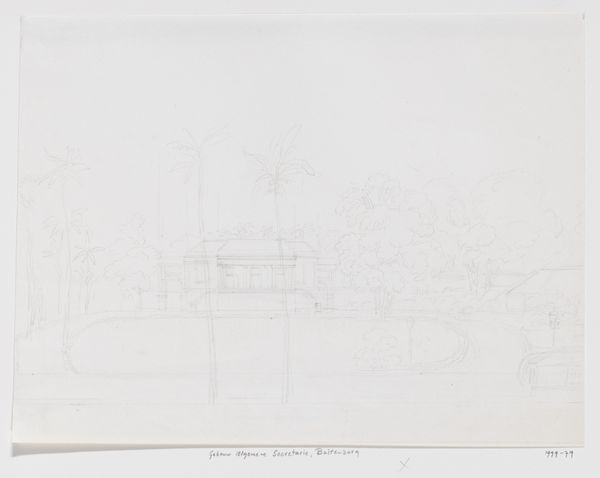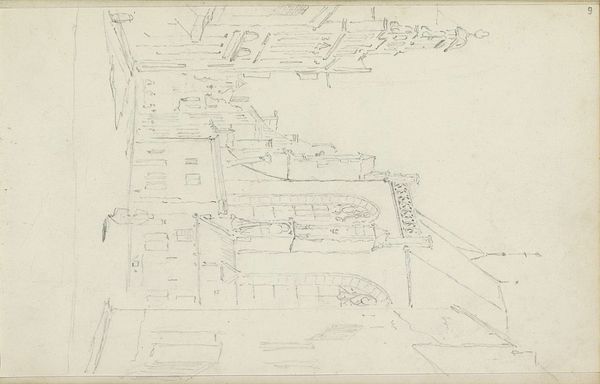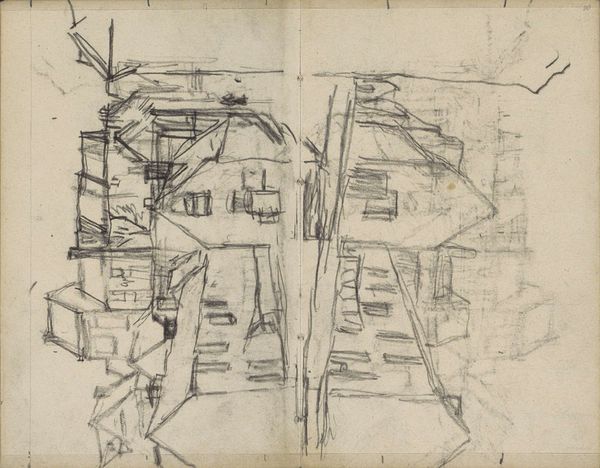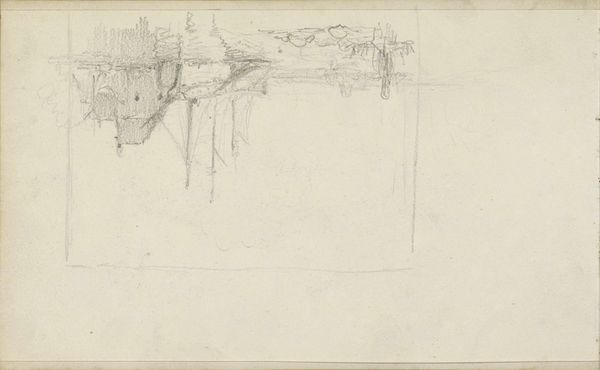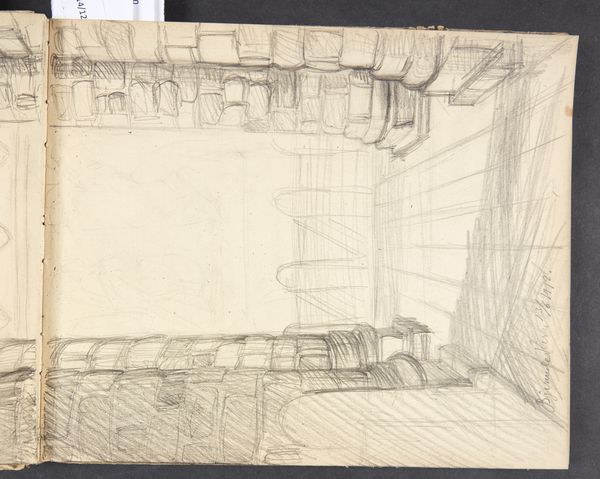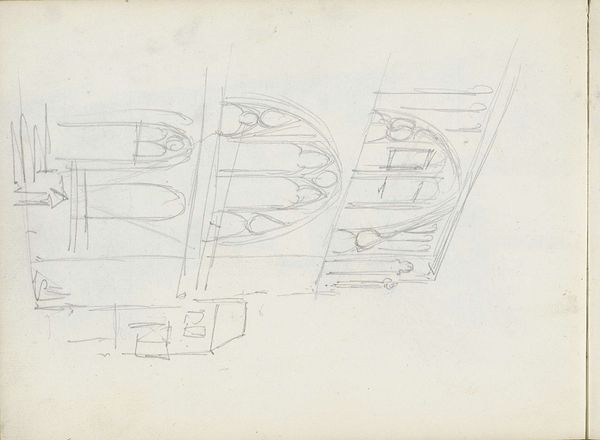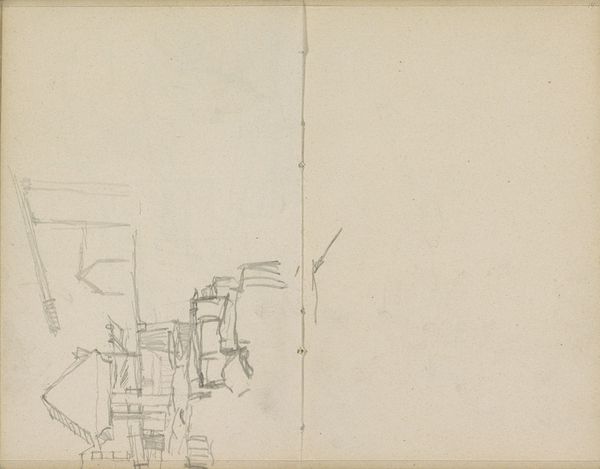
drawing, print, paper, pencil, architecture
#
drawing
# print
#
landscape
#
paper
#
pencil
#
architecture
#
realism
#
building
Dimensions: 7 11/16 x 9 3/4 in. (19.5 x 24.8 cm)
Copyright: Public Domain
Curator: Let's consider Franz von Hauslab the Younger's "Sketch of Building," created sometime between 1810 and 1883. It's rendered in pencil on paper, and presently resides here at the Metropolitan Museum of Art. Editor: Hmm, a very preliminary feel to it. Like catching a glimpse of something not quite there, like a half-remembered dreamscape slowly being revealed or just a fleeting thought put to paper. I think that mood is so interesting! Curator: I appreciate that instinctive read. What I see is more of a dedication to pure architectural form. Note the almost clinical grid overlaid on the structure; this rigorous geometric framework gives a structural integrity, even in its incomplete state, creating the very essence of the design before the details. Editor: Yes, and despite the artist’s devotion to rational construction, a softer, gentler emotion slips through because we know he never completely followed the grid's design—as any romantic artist worth their salt knows, deviations make it. It's less a blueprint, more an architect's emotional landscape. Curator: Interesting choice of words. To further dissect its meaning, one could use structuralist theory. We can deconstruct this 'building' and see it less as a shelter, and more of a signifier—a marker for concepts like 'home', 'stability', even 'society'. Editor: Well, I just love how something so fundamentally rational as a building's sketch becomes, when viewed through art, something dreamy. Like it’s about to dissolve into mist—perhaps because for many of us buildings are not just the physical, but our homes, workplaces, and communities—the fabric of life itself. Curator: Ultimately, our distinct perspectives underscore the power of the visual arts; as objects and architecture shift away, the art keeps the conversation ongoing through interpretation. Editor: True, there is a way for an artwork to remain a portal; with its secrets ready to whisper and invite wonder for many ages after both artist and work fade out of sight.
Comments
No comments
Be the first to comment and join the conversation on the ultimate creative platform.
